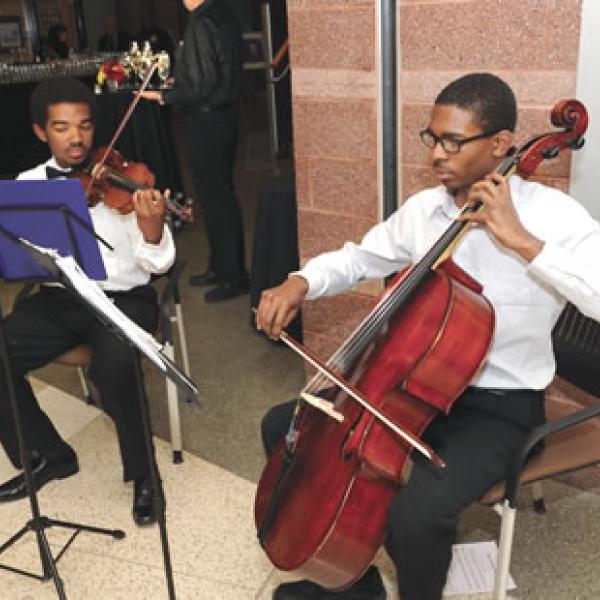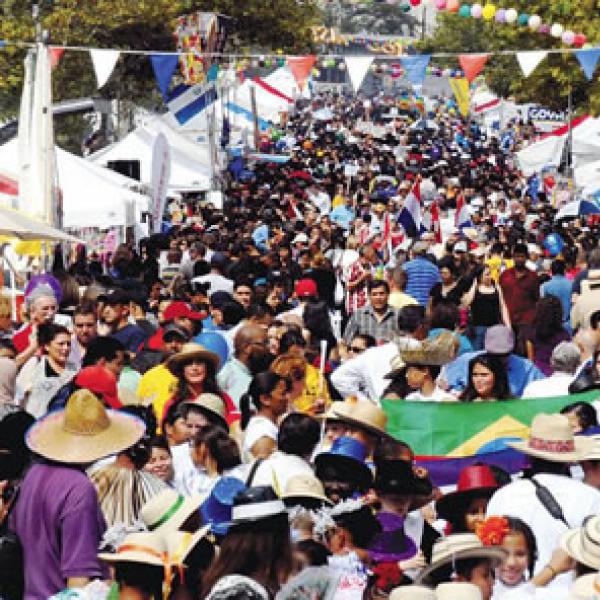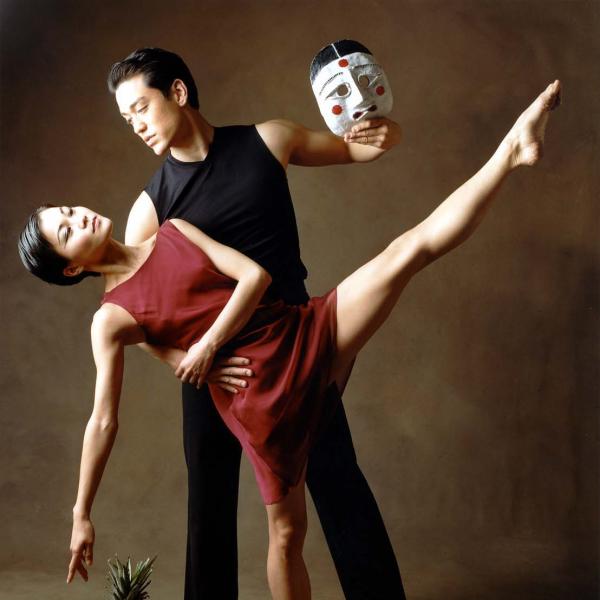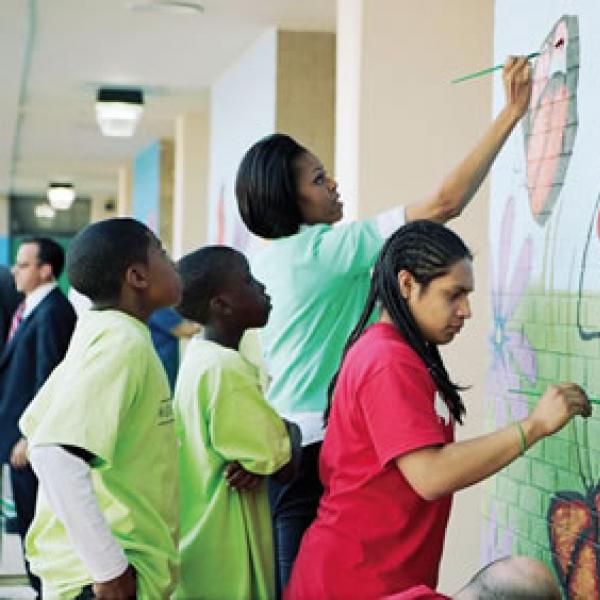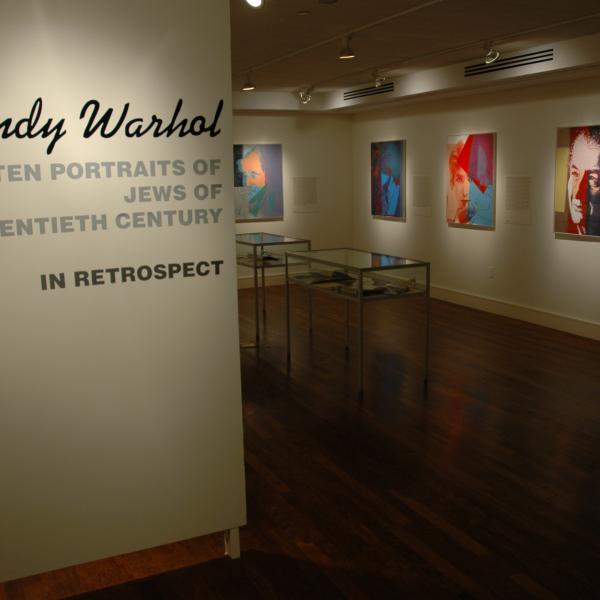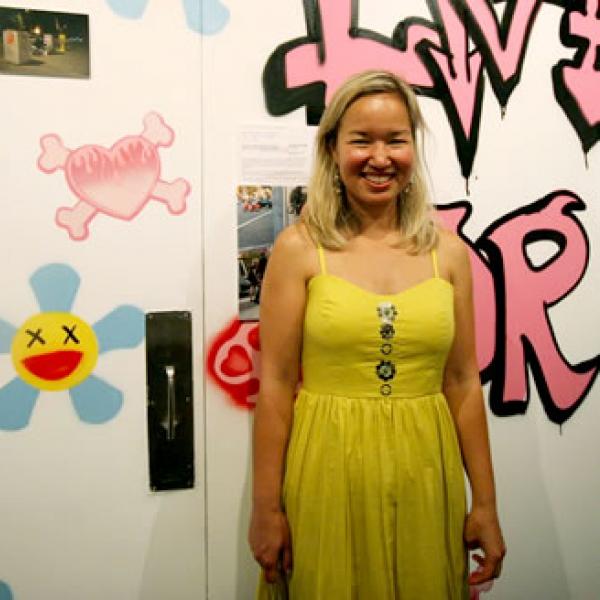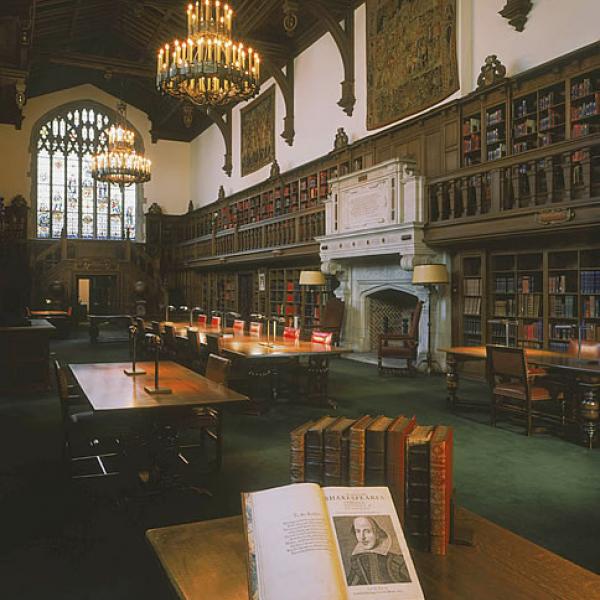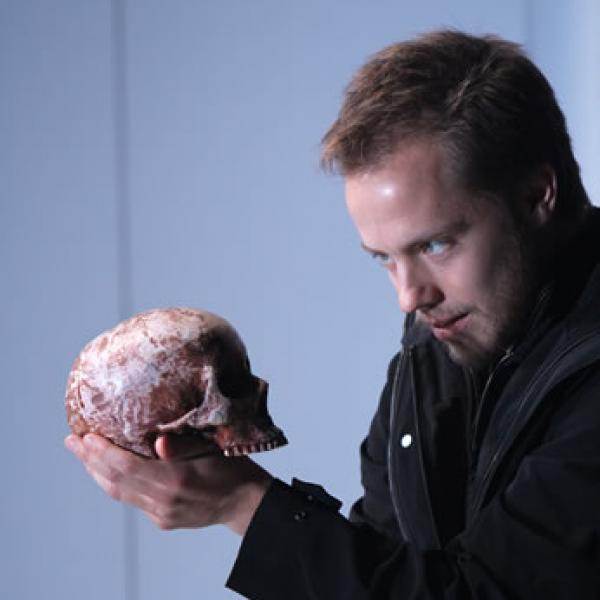First Person with Fred Joiner
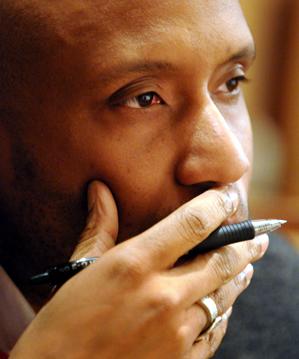
Fred Joiner moderates a panel of poet-scholars in Poetic Voices at The Phillips Collection, February 5, 2009. Photo © Lloyd Wolf
Fred Joiner, a poet and visual artist, has called DC’s Anacostia neighborhood home for the past six years. We asked Joiner to give us his take on working and living as an artist “across the river.”
There's an organization— ARCH Training Center— they did arts workshops with kids as part of enhancing their educational experience. There were a lot of kids here who got kicked out of school, and this was a way for them to get their GED but also to get other skills. The arts-related programming caught on, so much so that ARCH actually started an art gallery called Honfleur Gallery and their own development arm called ARCH Development Corporation. . . .The ARCH Development Corporation had a meeting to see what the community thought about an art gallery and about artists' housing, to field some ideas and see who was in the community. They were probably expecting 20 people, and it was more like 50. That was the introduction, that's where we all started talking to each other about what we can do, how we can do it.
I wanted to start a reading series out of the Honfleur Gallery. And they said, "Great--there's an organization that we’re helping out called the American Poetry Museum [APM], and we should link you up with the director of that organization.” Jon West-Bey [APM’s Executive Director] and I started talking and within six months to a year, we started the Intersections reading series. That partnership with the American Poetry Museum and Honfleur and ARCH really was the beginning of some of the other projects that happened.
We did a cultural exchange program where we did an exhibit of poetry and photography of a Northern Irish photographer. The exhibit showed here but it also showed in Belfast, Northern Ireland. I was there [in Northern Ireland] for 10 days with Katy Ritchey doing readings. I don't think we realize how much people look to the African-American community for inspiration for all kinds of things. I was talking to a guy. . .and one of the first things he asked me after he gave us a tour of the city was, "So what is Barack Obama really doing for working people?" It was an amazing experience. I mean right on one of the main roads right there in Belfast there's this huge mural of Frederick Douglass! Part of the reason why [APM] hooked up Belfast and Anacostia in particular is because some of the same issues that Anacostia is dealing with, Belfast, Northern Ireland, is dealing with in terms of having the highest rate of teen pregnancy in Europe, highest rate of alcoholism, depression. They have gangs, they have car theft, crime. I mean there're parallel kinds of struggles going on. And so the idea behind the exhibit was to show, "Hey, there's these people on the other side of the Atlantic that are living just like you and vice versa."
Another kind of project that came out of this partnership was with the Phillips Collection, who heard about the Intersections reading series, and wanted to do something similar. . . . The Phillips wanted something to get people really engaged in the artwork and give them something else to think about with it and to show all these kind of layers and overlap. One of [our collaborations] was around Jacob Lawrence's Migration Series, and we had two poets come and do presentations--one on Langston Hughes, one on Jean Toomer--and talk about migration through the filter of those two writers. And then I had three poets, three younger poets, dealing with hip hop and migration. And then I selected some artwork in their collection and wrote poems about it. [I also] selected some poets and selected a jazz band and they did kind of an improvisational set in the music room.
All of that comes out of the work that we were doing here in Anacostia, the reading series, the kind of network that we had built of poets that I personally knew and then poets that had heard about what we were doing.
Going forward, first of all, I hope that the city and some of the [landlords] who own some of these vacant buildings will let us use them as temporary art space. The whole phenomenon of the pop-up art gallery, it's been something that's been at work in other parts of the city for a while, and in other cities, and it's been successful. I think if we could find a way to make that happen here we can [showcase] not just Anacostia artists and artists east of the river but also bring artists from other parts of the city over here to exhibit and show in these temporary spaces. Honestly, I also would like this to be designated an arts district. . . from Howard Road up here all the way down to Good Hope and from Good Hope maybe up the hill a little bit. If we could get it to be an arts district, we could give incentives for arts organizations to come here and artists to move here.
An arts district can really rapidly galvanize the community and get people working together. When people see beautiful things in their neighborhood, I think it makes them feel better about living in their neighborhood. . . .It adds a certain kind of vibrancy that I don't think you can get any other way. And then I think that people who collect art and people who are interested in art seek out those neighborhoods, and I think that that welcomes not only artists but it welcomes patrons of the arts, which is just as important as the artists themselves.
I also think that living east of the river represents an opportunity for artists to own something. That's key. Even in Northwest, in some of the art galleries or art areas where people are selling their pieces for a lot of money and doing well, some of them don't own their space. There's a lot of us artists [in this area] who own our homes. To me that's really important, being able to own your home, being able to create out of your home. . . There’s a lot of stuff yet to be built here, there's a lot of development to come. So it presents an opportunity for artists to get in on the ground floor to be a part of actually creating something.
I'm just excited. I'm as excited about living here today as I was when I first moved here. And I'm looking forward to the journey. . . . I look forward to the coming out of the cocoon.



